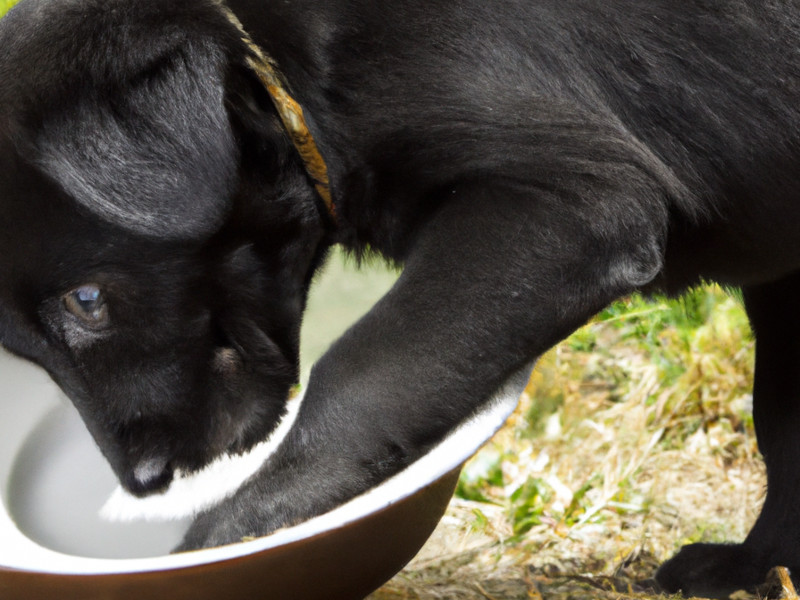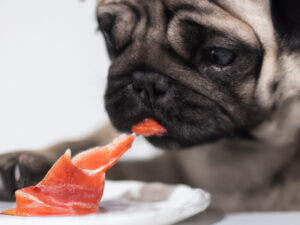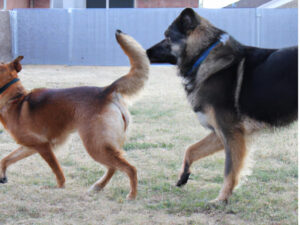Adding Fat to Your Dog’s Diet

You don’t want to add just any fat to your dog’s diet; instead, look for healthy fats. The best fats to add are those that are naturally occurring or wild fats.
Why Would I Need to Add Fat to My Dog’s Diet?
If you notice your dog is lethargic or that their spine, ribs, or pelvic bones are very prominent, there’s a high possibility your dog is underweight and needs healthy fat added to their diet. Of course, you should always consult a vet if you are unsure of what to do or if your dog needs to gain weight.
What Fat Should I Add to My Dog’s Diet?
One option is to look for dog food with a higher protein and fat percentage and gradually add this to their diet. Do this gradually to make sure your dog doesn’t get sick or have an upset stomach with the change in diet. It may take a couple of weeks to completely change over to the new dog food.
Another way to add fat is by feeding your dog foods that have healthy fat in them. Here are a few common foods that you can easily feed your dog.
Eggs
Eggs are a great way to add fat to your dog’s diet. Eggs contain omega-6 or Arachidonic Acid (AA), which is brain food. You want to make sure you cook the eggs to reduce the risk of salmonella. Dogs can eat eggs scrambled, poached, fried, or hard-boiled. If you fry the egg, make sure to use healthy fat such as raw pastured butter. The AKC recommends feeding your dog one egg per day.
Salmon
Salmon has anti-inflammatory omega fatty acids that are great for dogs. If you feed your dog salmon, make sure it is cooked and deboned. Salmon that has been canned or in a pouch is safe for dogs to consume, again make sure there are no bones that they might ingest. Salmon contains Eicosapentaenoic Acid (EPA) which not only is a great source of fat but helps to fight depression in dogs.
Avocado
It is okay to feed your dog the flesh of the Avocado just like you would eat yourself. You can easily add this to your dog’s diet. If your dog is on a kibble diet you will add ½ teaspoons for small dogs, ½-1 teaspoon for medium sized dogs, 1-2 teaspoons for a larger dog. Make sure you are reducing the amount of kibble you feed your dog when adding avocado to the diet. You will want to watch your dog to see how they tolerate the avocado and make adjustments as needed. If you feed your dog fresh food, it can be included in the plant matter portion at an amount you feel is good for your dog.
Chia Seeds
These seeds are a superfood for humans and dogs. Chia seeds can easily be ground up and sprinkled onto dog food. Because they have virtually no taste, your dog won’t even know it’s there! You can also soak them in water to make a gel to then be added to wet foods. Chia seeds are high in fiber and omega-3 fatty acids. They also help regulate blood pressure and aid in heart health. Because chia seeds are so small, you might think you can just sprinkle the seeds as they are on the dog’s food. It is best to prepare the chia seeds by grinding them up and then spreading them on the food. This way, the seeds are digested and fully absorbed.
Conclusion
If you are adding fat to your dog’s diet you want to look for sources of fat that would be naturally occuring, or those found in the wild. Adding these healthy fats to your dog’s diet will improve their skin and coat condition, help with eye and brain health, and improve their overall wellbeing.







